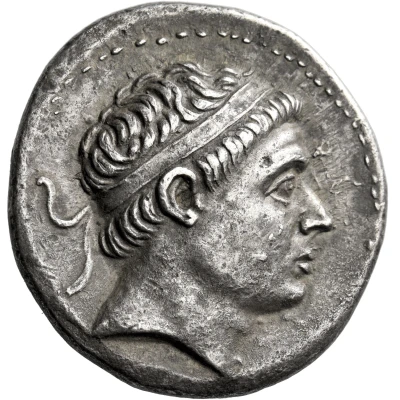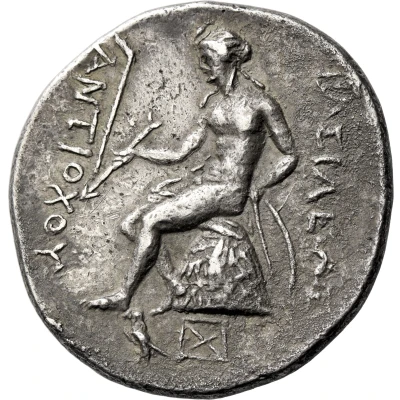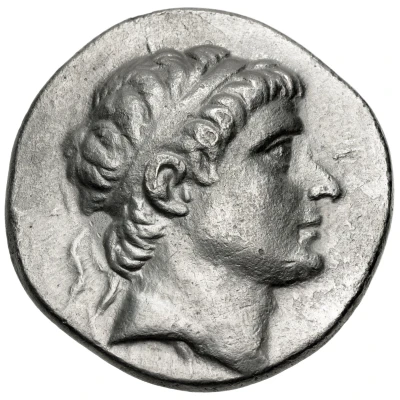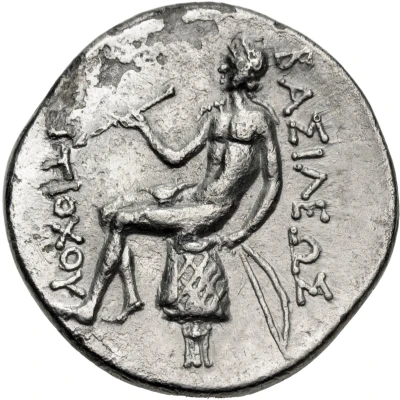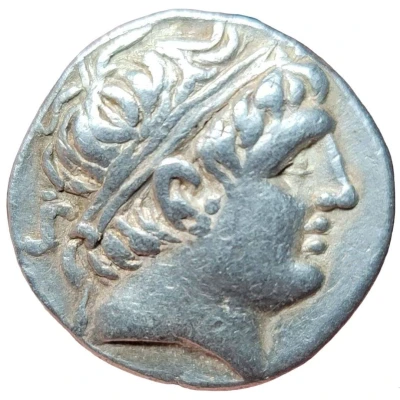
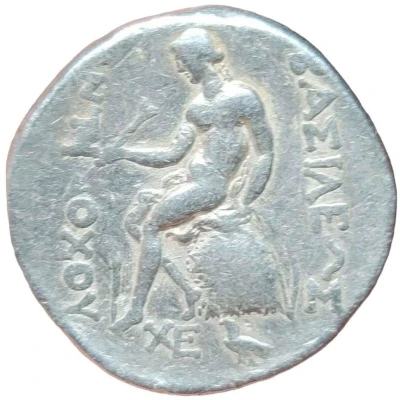

© PA-Engineer (CC0)
Tetradrachm - Antiochos Hierax 242 BC - 227 BC
| Silver | 17 g | 28 mm |
| Issuer | Seleucid Empire (Seleucid Empire (305 BC - 64 BC)) |
|---|---|
| King | Antiochos Hierax (246 BC - 227 BC) |
| Type | Standard circulation coin |
| Years | 242 BC - 227 BC |
| Value | Tetradrachm (4) |
| Currency | Drachm |
| Composition | Silver |
| Weight | 17 g |
| Diameter | 28 mm |
| Shape | Round (irregular) |
| Technique | Hammered |
| Orientation | Variable alignment ↺ |
| Demonetized | Yes |
| Updated | 2024-10-10 |
| Numista | N#357858 |
|---|---|
| Rarity index | 100% |
Reverse
Nude Apollo seated on omphalos, arrow in right hand, bow in left hand.
XE (monogram) with eagle
Script: Greek
Lettering:
ΒΑΣΙΛΕΩΣ ΑNTIOXOY
XE (monogram)
Translation: King Antiochos (Hierax)
Comment
Abydos or possibly Barbarous mint. If you read the story of Hierax, the youngest son of Antiochus II Theos, he was on the run from his older brother Seleucus II much of his life.Interesting fact
One interesting fact about the Tetradrachm coin of Antiochos Hierax is that it features the first known use of the anchor symbol as a mintmark, which was a unique feature of the Seleucid Empire's coinage. The anchor symbol was used to indicate that the coin was minted at the empire's main mint in Antioch, which was an important center of trade and commerce during that time. This feature helped to establish the authenticity and value of the coin, and it has become a distinctive characteristic of Seleucid coins that is still recognized by collectors and historians today.
